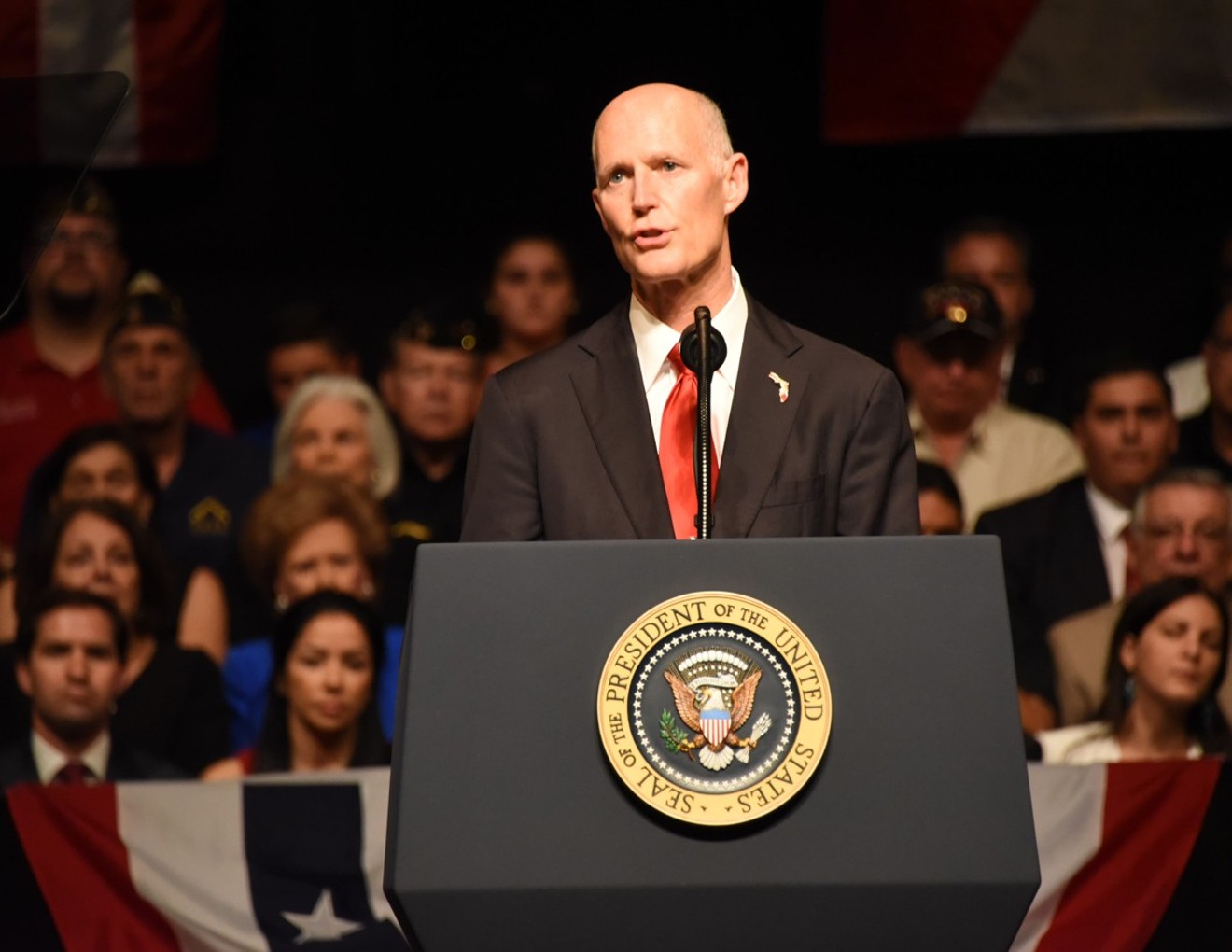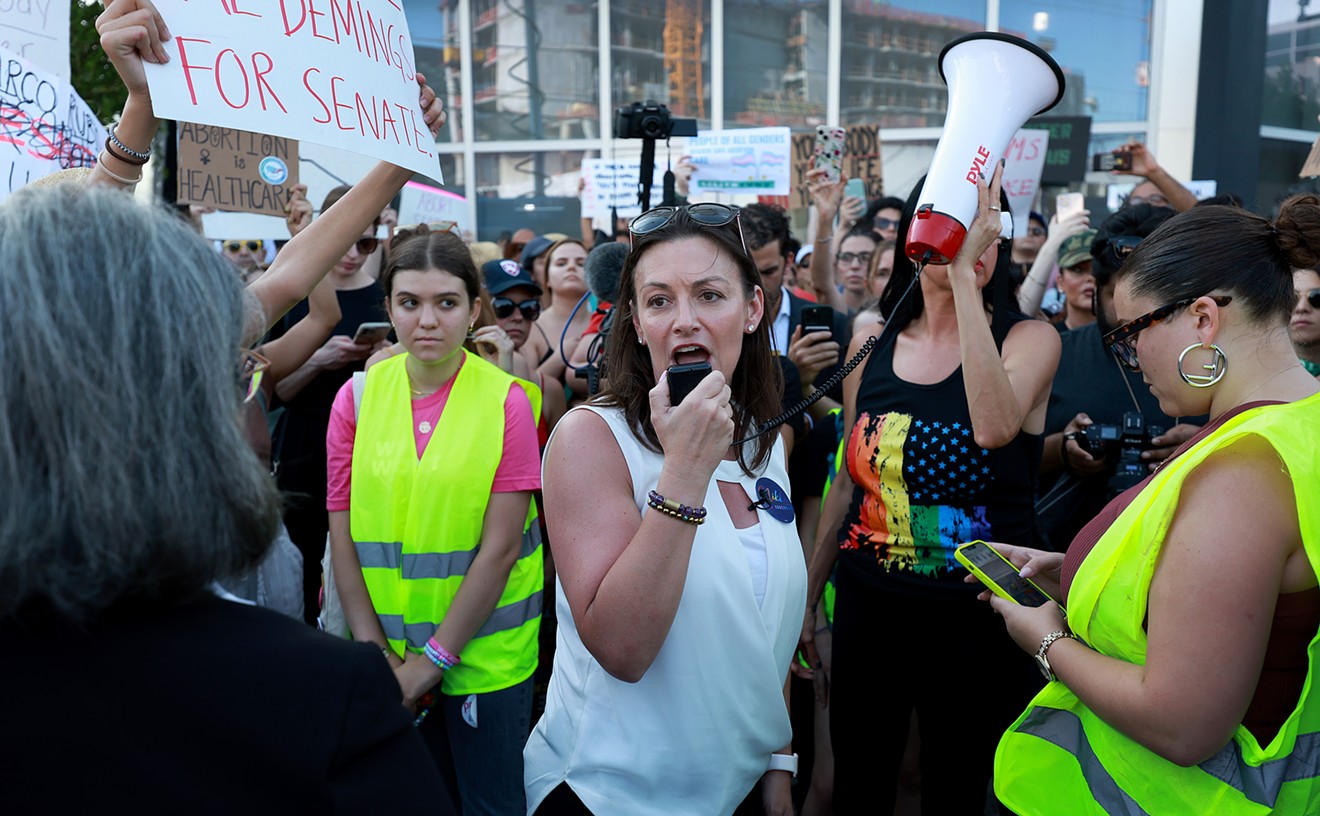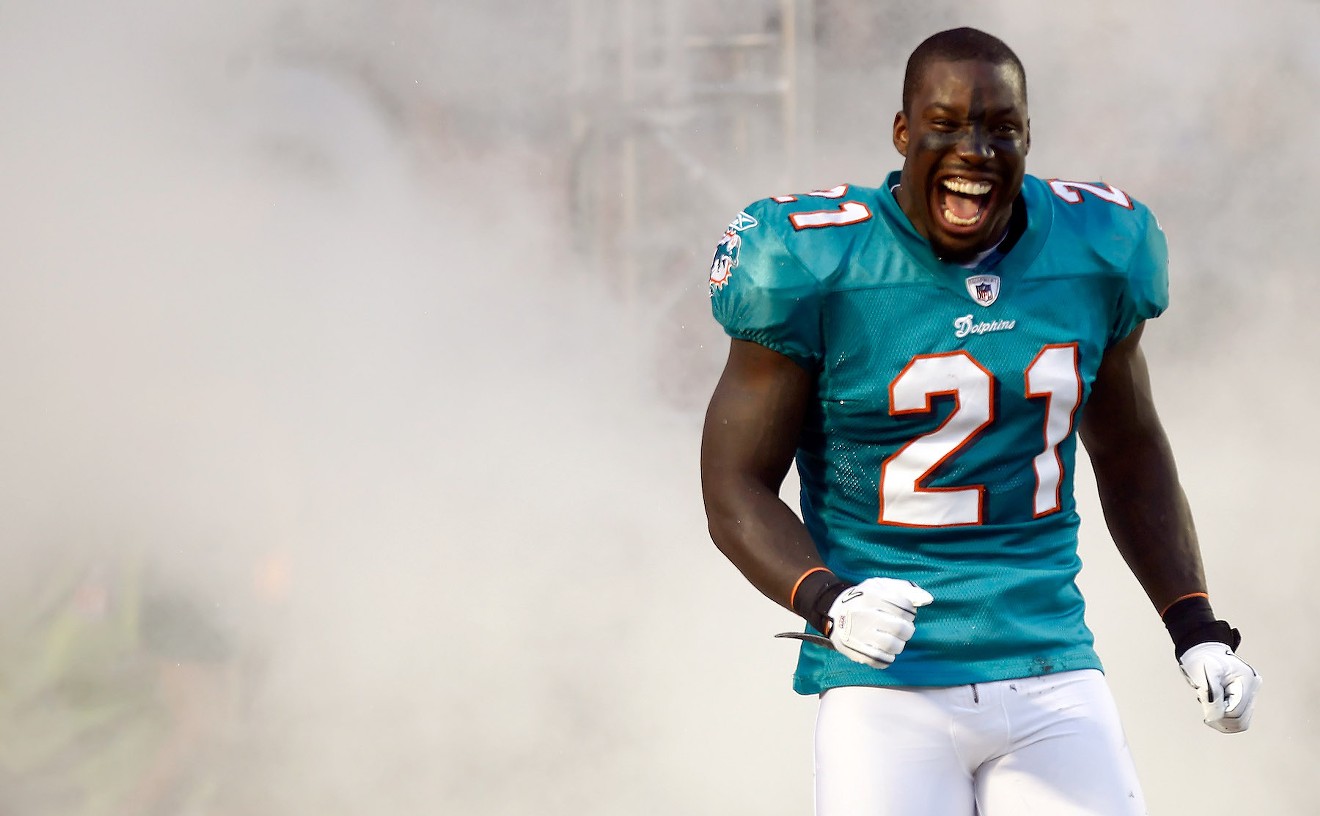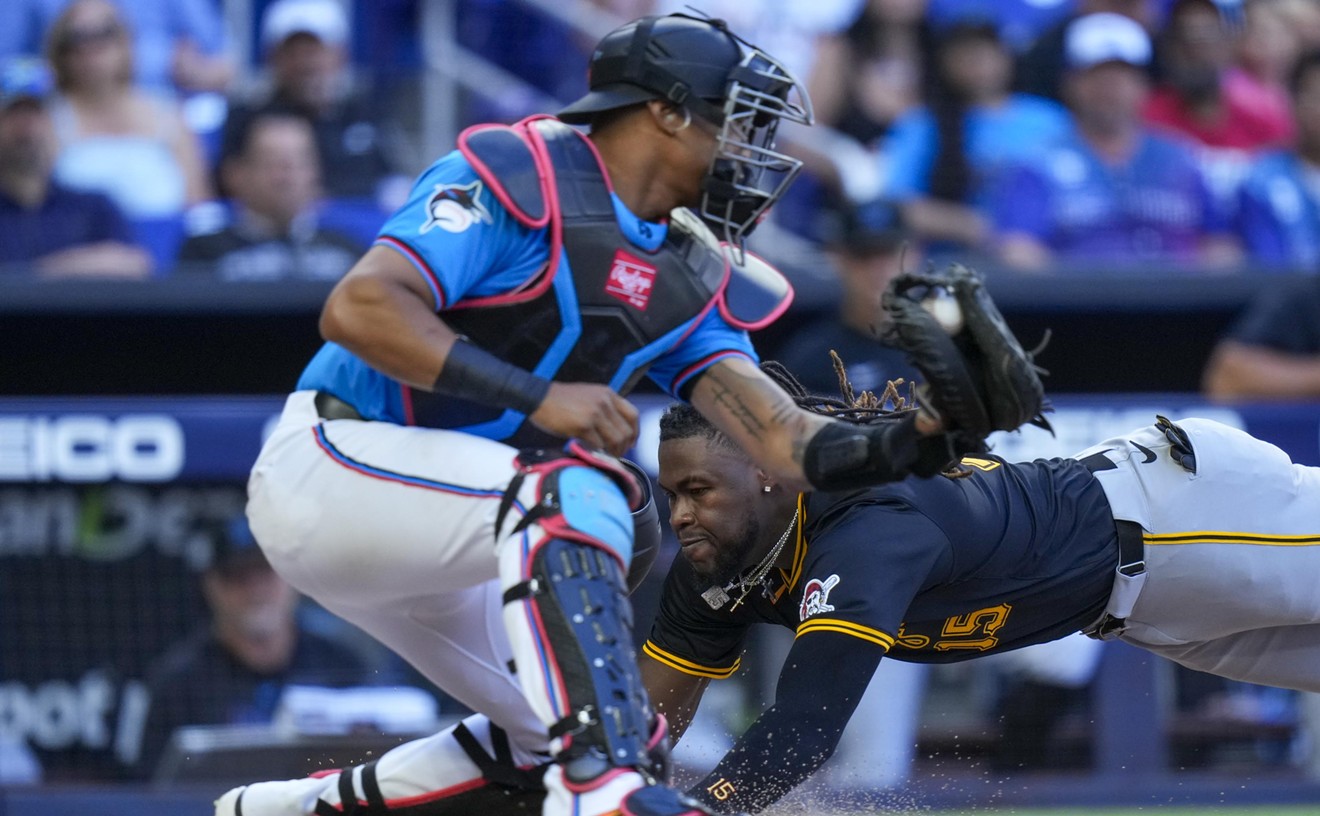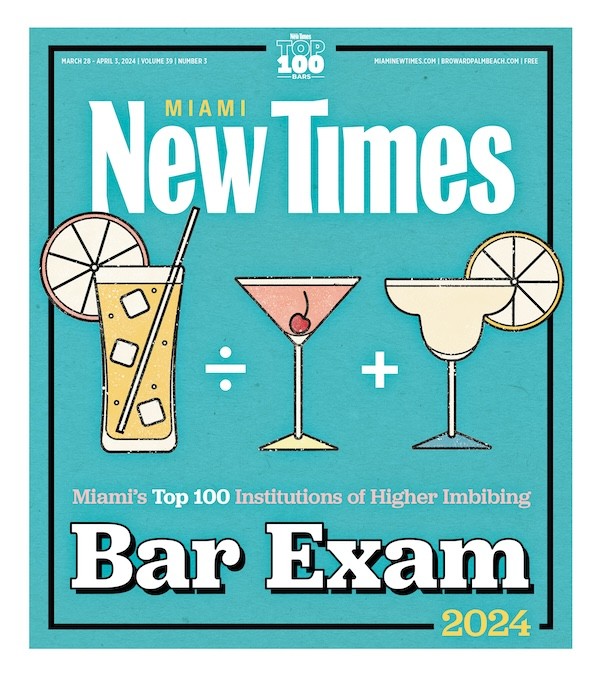In fact, New Times has been badgering Scott's office since Monday for an answer on whether he'd order the removal of Confederate symbols from state land. After initially promising an answer, they've ignored all
At a news conference Tuesday, Scott balked and said that we need to "have a discussion" about the
The state legislature is not currently in session — Scott has the power to call a special session to debate what happens to the state's monuments.
This is cowardice. Confederate monuments glorify an army that fought to keep black people enslaved. And the monument that sits in the Old Capitol is not only offensive but also remarkably factually inaccurate and even glosses over the fact that one of the battles it commemorates ended in Confederate soldiers slaughtering as many as 50 black Union soldiers who'd already surrendered. The battle has been called "one of the war's most notorious massacres."
The monument can't even get the name "Gettysburg" right — it's misspelled and listed as a "Virginia Battle" on the statue.
In the days since a white-supremacist terrorist murdered a woman and injured 19 others at a rally full of Klansmen and neo-Nazis, governors across the nation have called for the removal of Confederate symbols. Though Scott has condemned the attack, he has tiptoed around doing anything to combat racism. (He did sign a bill this year removing a statue of Confederate Gen. Edmund Kirby Smith from Florida's slot in the Washington, D.C. National Statuary Hall.)
According to author T.D. Allman's book Finding Florida, which Florida blogger Kevin Cate cited earlier today, the Tally monument was installed in 1881.
The statue also commemorates three Florida "battles" of the war — the Battles of Pensacola, Olustee, and Natural Bridge. Of those three, one battle might not have happened, and another ended in the slaughter of black people.Few things about the confederate monument at the Florida Capitol. One, Gettysburg is misspelled and misplaced... pic.twitter.com/IHPD1JRcGU
— Kevin Cate (@KevinCate) August 17, 2017
There appears to be some disagreement over whether a "Battle of Pensacola" happened: Cate notes the "battle" could actually refer to the official "Battle of Santa Rosa," in which Confederates failed to take a fort near the city; a series of artillery attacks that decimated much of Pensacola; or the Confederates' eventual retreat from the city, wherein they burned it to the ground. Other historians, however, have lumped these events into a single battle that stretched from 1861 to 1862.
However, there is no debating the Battle of Olustee ended in a racist massacre.
In 2014, University of Alabama historian Glenn David Brasher recounted the battle in a New York Times blog post. According to the post, Abraham Lincoln wanted to take Florida to try to capitalize on the relatively large number of Union loyalists there. Eventually, Union and Confederate troops met near Olustee Station in the North Central part of the state — the Union troops were relatively inexperienced and were largely decimated by the Confederates.
“What we saw all made our blood run cold,” one Union soldier recalled, according to Brasher. “Everywhere, men were staggering out of the forest, faces... dripping with blood and sweat, dragging themselves and their wounded comrades to safety.”
The battle ended with Confederate soldiers slaughtering the black soldiers who remained. Brasher noted that Confederates had a habit of slaughtering black soldiers who surrendered simply out of spite and racial hatred. Despite the pleas from white Union soldiers, who tried to load as many black comrades as possible onto ambulances to keep them from falling into Confederate hands, not every soldier escaped. The results were horrifying:
Unfortunately, not all of the black troops escaped. A wide variety of letters and memoirs written by Confederate troops in the days and years after the battle suggest that as many as 50 wounded African-American troops were shot and even clubbed to death by rebel soldiers. “I tell you our men slayed the Negrows,” a Virginia soldier wrote home, “& if it had not been for the officers their would not one of them been spaired.” A Georgia soldier recalled how the wounded blacks “would beg and pray, but it did them no good.” Some accounts shockingly describe Confederate surgeons performing needless and purposely shoddy amputations on black limbs.That is what the monument in Florida's Old Capitol building represents. It's time Scott grew a spine and said something about it.

